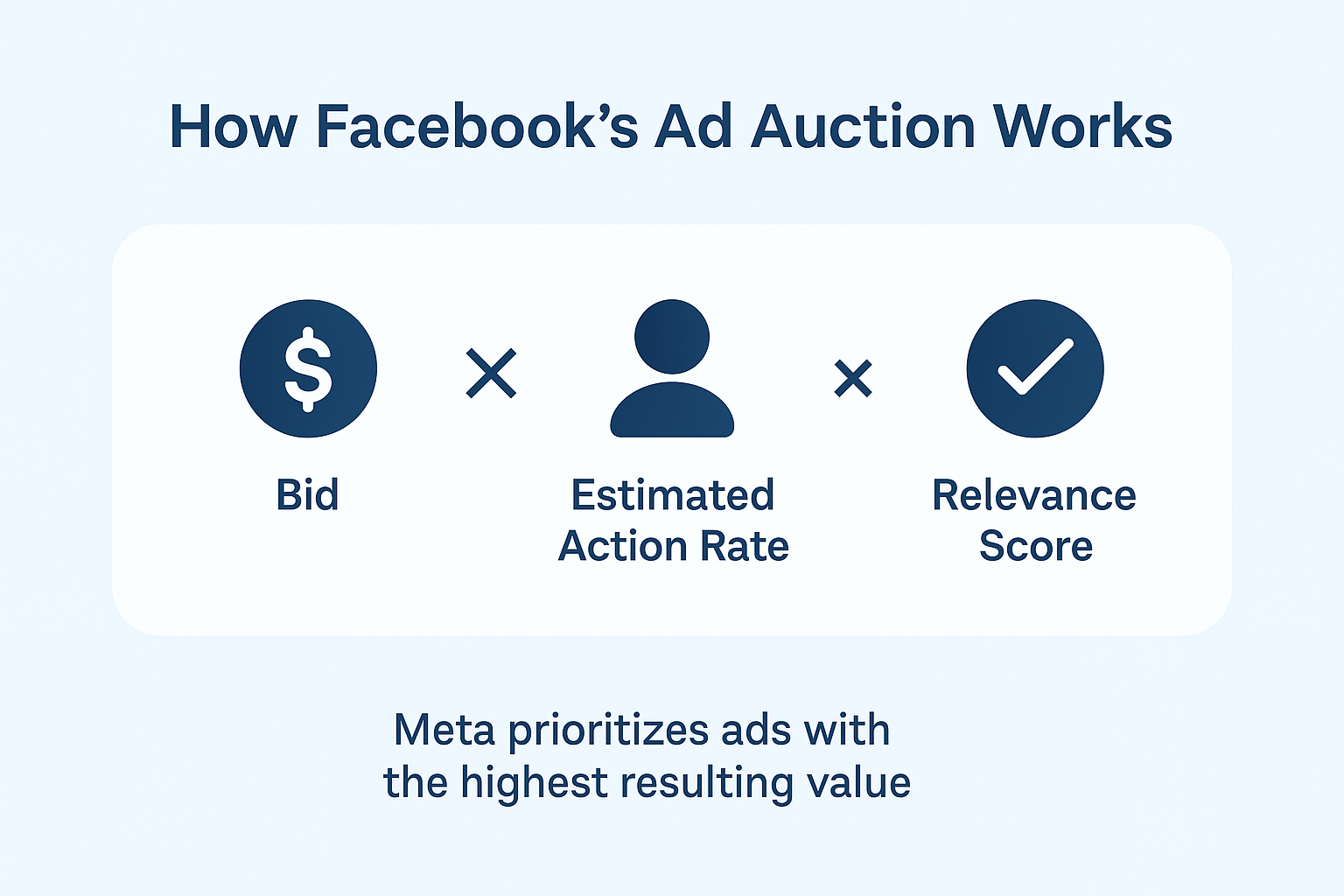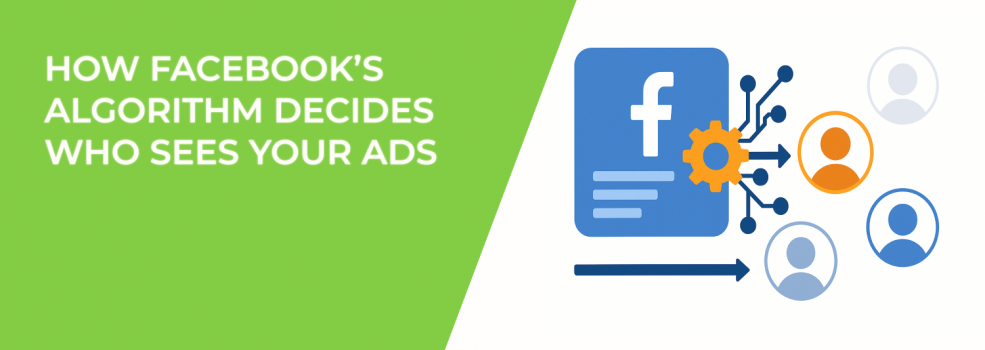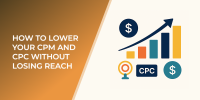If you’ve ever launched a Facebook ad and wondered why it barely got any impressions — or why it seemed to show up for the wrong people — you’re not alone.
Behind every ad delivery is a powerful system that scores, filters, and prioritizes content. Understanding how Facebook’s ad algorithm works isn’t just helpful — it’s essential if you want better results without endlessly increasing your budget.
Let’s break it down step by step.
How Facebook’s Ad Algorithm Actually Works
Every time someone opens Facebook, the platform runs a real-time evaluation of all the content it could show that person — including paid ads.

Facebook’s content distribution system follows four core stages:
1. Inventory — What’s available to show right now?
Facebook first looks at the pool of content that could be shown to the user. That includes:
-
Organic posts from friends, Pages, and Groups.
-
Content from followed brands and publishers.
-
Ads that meet the criteria for the user (based on audience targeting and placements).
Your ad joins this inventory if it meets your targeting criteria — but entering the pool doesn’t mean it will get shown. It’s just step one.
2. Signals — What context can Facebook use to make a smart decision?
Facebook collects information (called "signals") about the user, the content, and the device. These signals include:
-
Who posted the content.
-
When it was posted.
-
The user’s device type, time of day, location, and connection speed.
-
Past behavior — like whether the user engages with similar ads or brands.
These details help Facebook understand what content is likely to be engaging and worth showing.
3. Predictions — How will this user interact with the content?
Next, Facebook’s machine learning models make predictions. For ads, it asks:
-
Will this user click the link?
-
Will they watch the video?
-
Will they engage with the post (like, comment, share)?
-
Will they hide or report it?
These predictions help Facebook rank ad quality before anything is shown.
4. Scoring — What is the relevance score for this user?
Finally, all predictions are combined into a relevance score, which helps decide:
-
Whether your ad should be shown at all.
-
How much you’ll pay in the ad auction (higher relevance often means lower cost).
-
Where your ad should appear (feed, Stories, Reels, etc.).
This process happens in milliseconds — for every single impression.
If your ad isn’t performing well, it could be because of poor early signals, low predicted engagement, or technical misalignment.
To dig deeper into why your ad may not be showing at all, read: Why You See 'Ad Set May Get Zero' on Facebook and How to Fix It.
What Advertisers Can Do to Improve Ad Delivery
Now that you know how the algorithm works, here’s how to work with it, not against it.
Focus on relevance — not just reach
Facebook’s system rewards ads that feel relevant to the user. That means:
-
Speaking directly to your audience’s problems and desires.
-
Using language they actually use.
-
Featuring content that blends into the feed but still stands out.
If you need help defining your audience, check out How to Define a Target Audience for Marketing: A Step-by-Step Guide.
Refine your targeting
If your targeting is too broad or misaligned with your creative, Facebook will struggle to make good predictions. To fix this:
-
Use custom audiences based on actual behavior (website visits, video views, email lists).
-
Try lookalike audiences based on customers — not just website visitors.
-
Use exclusions to filter out irrelevant users (for example, past purchasers).
You can dive deeper into these tactics with Facebook Ad Targeting 101.
Choose the right campaign objective
When setting up a campaign, your selected goal tells Facebook what to optimize for — impressions, clicks, conversions, or something else.
If your goal doesn’t match your funnel stage, Facebook won’t know who to prioritize in delivery.
To avoid common mismatches, read Meta Ad Campaign Objectives Explained: How to Choose the Right One.
Let the learning phase complete
Facebook uses a "learning phase" to test how your ad performs before scaling delivery. If you make too many changes or limit your budget, it won’t get enough data to optimize.
Here are a few tips:
-
Avoid major edits in the first 2–3 days.
-
Allow for at least 50 optimization events per week (such as purchases or leads).
-
Use a realistic budget that gives Facebook room to learn.
To speed this up, read How to Finish the Facebook Learning Phase Quickly.
Improve your ad quality
Facebook monitors engagement rates and user feedback to determine ad quality. Here’s how to improve yours:
-
Use clear, concise headlines that get to the point.
-
Make visuals mobile-friendly and readable without sound.
-
Avoid clickbait, spammy language, or misleading offers.
-
Keep your landing page consistent with your ad — and fast to load.
Low engagement or negative reactions can hurt future delivery, even with a high budget.
If your ads are running but conversions are low, see Facebook Ads Not Converting: How To Fix It.
Final Thoughts: Let the Algorithm Help You
Facebook’s algorithm isn’t trying to stop your ad from succeeding. It’s just trying to show people the content they’re most likely to enjoy or act on.
The better your ad matches what people want to see, the better your results will be — and the more efficiently your budget will be used.
Here’s a simple checklist before launching:
-
Have you selected the right objective for your goal?
-
Is your audience targeting clear, not too broad or too narrow?
-
Does your creative speak to real customer pain points?
-
Are you giving the system enough budget and time to learn?
Get these right, and the algorithm will do the rest.

